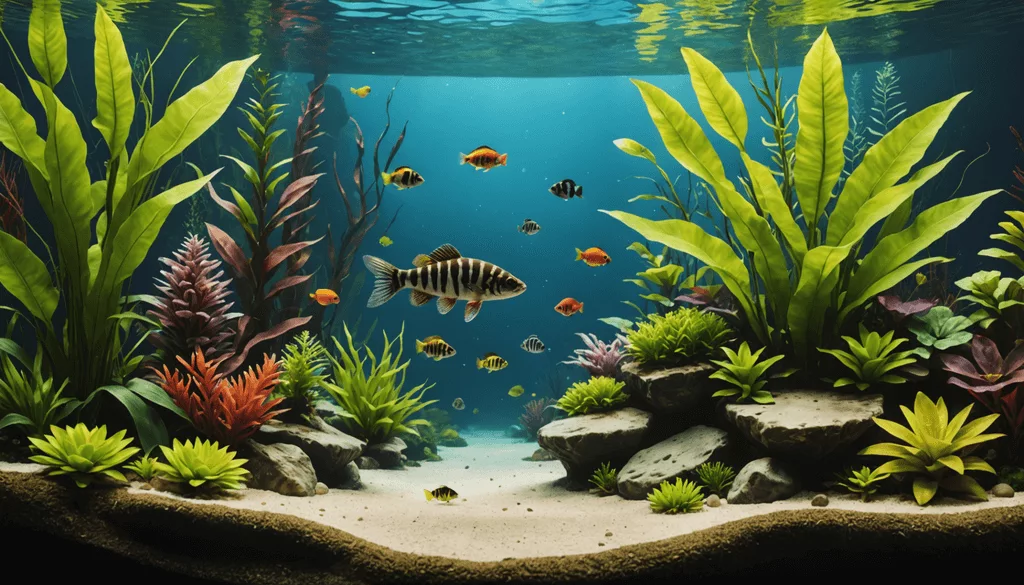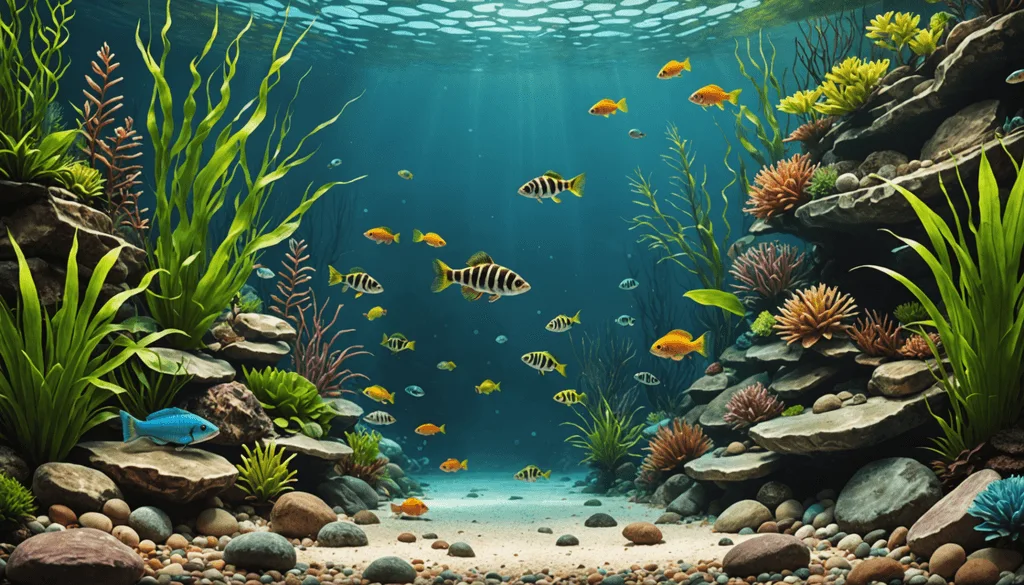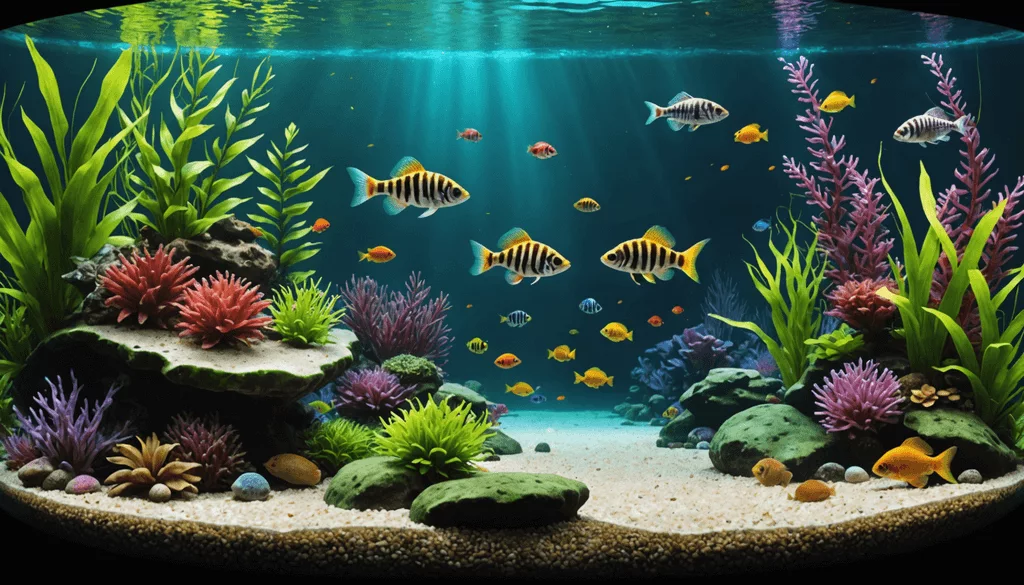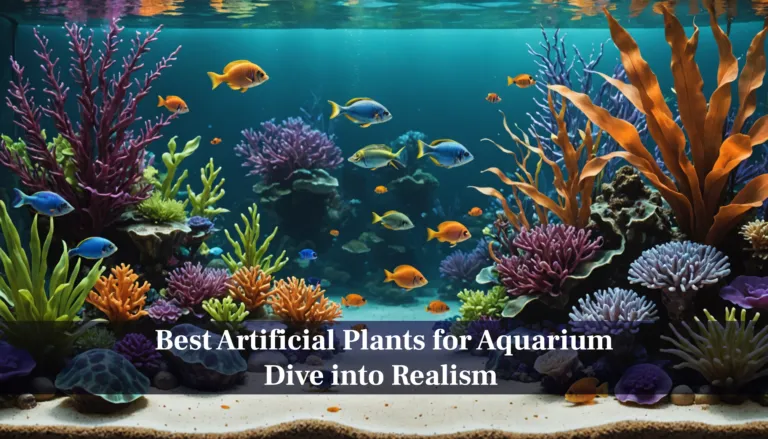Have you ever wondered which fish can bring excitement to the bottom of your aquarium? The fish tank loach is one of the most popular freshwater species that can add life and action to your underwater world! These fascinating little creatures not only help keep your tank clean by scavenging for leftover food, but they also come in a wide variety of shapes, sizes, and colors.
In this article, we’ll dive into the wonderful world of fish tank loaches, exploring the best species to keep in your community aquariums, like the clown loach and kuhli loach. You’ll learn proper feeding techniques, how to create a thriving habitat, and tips for successfully introducing new loaches to your tank. Ready to unlock the secrets of these playful bottom dwellers? Let’s get started!
Understanding Loaches: Characteristics and Habitat

What is a Loach? Overview of Its Features
Loaches are unique freshwater fish that live on the bottom of rivers, lakes, and aquariums. They belong to the suborder Cobitoidei. Loaches have long, slender bodies and special whisker-like appendages called barbels around their mouths. These barbels help them find food in the substrate, the bottom layer of their environment.
Loaches come in many sizes. The miniature eel-loach is tiny, measuring about 1 inch long. In contrast, the imperial flower loach can grow up to 20 inches. Most loaches have smooth skin with small scales that are hidden beneath the surface, making them fascinating to observe in aquariums.
| Loach Species | Size | Notable Traits |
|---|---|---|
| Miniature Eel-Loach | 1 inch | Very small, prefers soft substrate |
| Clown Loach | Up to 12 inches | Bright colors, playful nature |
| Zebra Loach | 6-8 inches | Striking stripes, sociable |
| Kuhli Loach | 4 inches | Eel-like shape, nocturnal habits |
| Imperial Flower Loach | Up to 20 inches | Largest species, beautiful patterns |
Common Varieties of Loach in the Aquarium Trade
Many loach species are popular among aquarium enthusiasts. A few of the most common include:
- Clown Loach: This species is loved for its bright colors and playful behavior. Clown loaches are social and often swim together in groups.
- Kuhli Loach: Known for its eel-like shape, the Kuhli loach is a nocturnal fish. It comes out at night to hunt for food.
- Zebra Loach: This variety has striking stripes and is friendly with other fish. It enjoys swimming with its tank mates.
There are over 1,249 recognized species of loaches, spread out across nine families. This wide variety showcases many shapes and colors, making them a delightful addition to any community aquarium. (Wikipedia)
Natural Habitat of Loaches and Their Environmental Needs
Loaches are found mainly in freshwater habitats such as rivers and creeks in Eurasia and northern Africa. They thrive in soft, well-oxygenated waters. These fish prefer areas with plenty of hiding spots, including rocks and plants.
In a natural setting, loaches like to burrow into the substrate, searching for food. They favor sand or soft substrates where they can dig and explore. Maintaining stable water conditions in an aquarium is crucial for keeping loaches healthy. They need clean, well-filtered water to thrive.
Loaches are captivating fish that add character to any aquarium. Their unique features, diverse varieties, and specific habitat needs make them a popular choice among fish keepers. For further insights, explore the specific care requirements of loaches to ensure a thriving environment in your aquarium.
Best Fish Tank Loaches to Keep in Your Aquarium

Top 7 Best Loaches as Tank Mates
Loaches are great companions because of their peaceful nature. They help create a lively community aquarium. Here are seven ideal loach species as tankmates:
| Loach Species | Size (inches) | Tank Size (gallons) | Behavior |
|---|---|---|---|
| Clown Loach (Chromobotia macracanthus) | Up to 12 | Minimum 50 | Social, active |
| Yoyo Loach (Botia almorhae) | 4-6 | Minimum 30 | Friendly, exploratory |
| Kuhli Loach (Pangio kuhlii) | 4 | Minimum 20 | Nocturnal, shy |
| Zebra Loach (Botia striata) | 6-8 | Minimum 30 | Playful, social |
| Dario Botia Loach | 2-3 | Minimum 20 | Peaceful, group-oriented |
| Hillstream Loach | 3-4 | Minimum 30 | Adaptable, unique shape |
| Weather Loach (Misgurnus anguillicaudatus) | 6-12 | Minimum 30 | Hardy, active |
These loach species not only add diversity to your aquarium but also enhance tank health by scavenging leftover food.
Detailed Look at Zebra Loach, Clown Loach, and Others
- Zebra Loach: This colorful fish is known for its active behavior. It requires a minimum tank of 30 gallons and prefers smooth rocks for hiding.
- Clown Loach: Recognized for their striking orange color with black stripes, Clown loaches thrive in groups of three or more. A larger tank (50 gallons or more) allows them to swim freely.
- Kuhli Loach: These small, slender loaches resemble eels and enjoy a soft substrate for burrowing. They are best kept in groups of five or more for social interaction.
Each of these loaches brings unique traits to the aquarium, making them fun to watch and beneficial for the ecosystem.
Why Loaches are Ideal for Community Aquariums
Loaches are generally peaceful and well-suited for community aquariums. Their behaviors make them entertaining. Here are some reasons why loaches are ideal for community tanks:
- Compatibility: Loaches often coexist well with many fish species, including goldfish. Their non-aggressive nature allows them to thrive alongside other fish.
- Cleanup Crew: As natural scavengers, loaches help keep the tank clean by consuming leftover food and algae. This behavior promotes overall tank health.
- Active Behavior: Loaches are known for their playful and curious nature. They add liveliness to the aquarium, making it visually appealing.
- Wide Variety: With many species available, aquarists can choose loaches that suit their specific tank conditions and preferences.
Having loaches in a community aquarium enhances the overall experience, providing both visual interest and ecological benefits.
Caring for Your Loach: Feeding and Maintenance

Proper Feeding Tips: What Loaches Eat
Loaches are omnivorous fish, which means they eat both plants and animals. They flourish on a diet of high-quality sinking pellets, algae wafers, and live/frozen foods (e.g., bloodworms, brine shrimp).
Feeding should happen in small amounts several times a day. This mimics their natural feeding habits and helps prevent overfeeding, which can lead to poor water quality. Monitor how much food is consumed and adjust portions to keep the tank clean and healthy.
| Food Type | Description |
|---|---|
| Sinking Pellets | High-quality food that sinks for loaches to forage. |
| Algae Wafers | Great for grazing and providing essential nutrients. |
| Live or Frozen Foods | Includes bloodworms and brine shrimp, which loaches love. |
Creating the Ideal Tank Environment for Loaches
For loaches to thrive, their tank should mimic their natural habitat. A spacious tank is important, allowing them to swim freely and explore. They love hiding spots, so adding plants, rocks, and caves is crucial. The water flow should be gentle, similar to the calm rivers they come from. A substrate that permits digging and foraging is ideal; smooth rocks and fine gravel work well.
Loaches prefer slightly acidic to neutral pH. The temperature should range from 72°F to 78°F (22-26°C). Regularly checking water conditions ensures they live in clean, well-oxygenated water.
Cleaning and Maintenance: Keeping Your Tank Healthy
Regular maintenance is vital for a healthy aquarium and happy loaches. Change 10-15% of the water each week to maintain quality. Remove any leftover food quickly to prevent decay. Vacuum the substrate occasionally, especially where food settles.
Keeping the tank clean benefits not just the loaches but also other fish. A well-maintained aquarium promotes healthy growth and vibrant colors for all its inhabitants. Regular water quality testing ensures that conditions remain suitable for your fish tank loach and its companions.
With proper care, your loaches will thrive and contribute to a lively aquarium environment. As you continue to learn about loach behavior and care, you can explore how to successfully introduce them into your tank.
Introducing Loaches into Your Fish Tank

How to Successfully Introduce New Loaches
Introducing new loaches to your aquarium requires care. Start by placing the new loach in a separate container filled with water from the aquarium. Slowly mix in water from the main tank over several hours. This gradual process is called drip acclimation, which helps the loach adjust to its new environment.
During this acclimation, the temperature and water chemistry will stabilize, making it easier for the fish. Once the loach seems comfortable, gently release it into the main tank. This method reduces stress and improves the chances of a successful introduction.
For example, when introducing a Clown Loach, which can grow up to 13 to 15 cm, provide enough space and cover. Loaches feel safe in environments with plenty of hiding spots like smooth rocks and plants. This ensures a smooth transition and helps them feel secure.
| Loach Species | Size (cm) | Ideal Tank Size | Preferred Substrate |
|---|---|---|---|
| Clown Loach | 10-30 | 55-gallon | Soft, sandy substrate |
| Dojo Loach | 10-30 | 30-gallon | Smooth rocks or sand |
| Kuhli Loach | 10-12 | 20-gallon | Fine gravel or sand |
| Zebra Loach | 10-15 | 30-gallon | Sandy substrate |
(Loaches)
Observing and Managing Aggression Among Fish
Loaches are generally peaceful and social fish. They thrive when kept in groups and usually prefer the company of their own kind. However, monitor their interactions closely when introducing new tank mates.
Some loaches, especially larger or dominant species like the Tiger Loach, may display territorial behavior. It is essential to observe how the loaches react to new arrivals. If aggression occurs, separating the fish may be necessary to prevent harm.
For instance, when introducing a Tiger Loach to a tank with smaller species, ensure they have enough space and structures to retreat. Confirming compatibility among fish species is vital for maintaining a peaceful aquarium.
Signs that Your Loach is Thriving in Its New Environment
A healthy loach displays several signs of thriving. Active loaches swim around, explore their surroundings, and show interest in food. They often forage along the substrate, using their barbels to search for snacks.
Conversely, signs of stress include excessive hiding, lack of appetite, or unusual swimming patterns. If a loach spends too much time hidden or refuses to eat, it may indicate a problem.
For example, if a Dojo Loach hides in tight corners of the tank, it might not feel comfortable. Providing more hiding spots or checking water conditions can help create a more welcoming environment. (Promeal)
By following these tips, you can help your loaches settle into their new homes successfully and ensure they thrive in your freshwater tanks.
The Benefits of Keeping Loaches in Your Aquarium

Why Choose Loaches as Bottom-Dwellers?
Loaches are excellent bottom-dwellers because they keep the substrate clean. They scavenge leftover food and detritus, preventing waste buildup. This behavior promotes a healthier tank environment. Their playful nature adds excitement to the lower levels of your aquarium. Watching loaches explore and interact brings joy to any fish tank enthusiast.
Many loach species, like the Clown Loach and Kuhli Loach, are visually appealing. They are known for their vibrant colors and unique patterns. This beauty makes them attractive additions to community aquariums. Their peaceful temperament allows them to coexist with various fish species. They thrive in groups and display interesting behaviors, making them fun to observe as they swim around.
Long-Term Care Considerations for Loaches
Caring for loaches involves essential factors for their health. They are omnivores and need a varied diet. Offer sinking pellets, frozen foods, and vegetables. This ensures they receive the nutrients required for growth.
Maintaining water quality is crucial for their well-being. Regular water changes help keep their environment clean. Loaches prefer stable conditions, including temperature and pH levels. Regularly monitoring these aspects prevents stress and illness.
Provide plenty of space and hiding spots in your tank. Smooth rocks, plants, and decorations create a comfortable environment. Hiding spots help loaches feel secure, reducing stress. A well-planted aquarium mimics their natural habitat, allowing them to thrive.
Regular health checks should be part of your routine. Observing their behavior helps identify signs of stress or illness. Keeping loaches in a stable, supportive environment leads to a long, healthy life in your aquarium.
With proper care, loaches will thrive in your aquarium, making them a fantastic choice for any fish tank enthusiast.
Conclusion
In conclusion, loaches are truly fascinating fish that can bring excitement to any community aquarium! With a wide variety of species like the playful clown loach and the unique kuhli loaches, there’s something for everyone. Remember, providing the right habitat and care, such as a clean tank and proper feeding, is crucial for their happiness and health.
Whether you’re observing their playful antics or watching them scavenge for food, loaches can make your aquarium come alive. So, dive deeper into the world of loaches and discover all the incredible ways you can enhance your fish tank experience! Happy fishkeeping!
FAQs
1. What size aquarium do I need for loaches?
Loaches like the almorha loach or amur mud loach thrive in a 5-gallon or larger aquarium. However, larger species such as the clown loach need a 30-gallon aquarium or bigger for proper growth.
2. Are loaches good for community aquariums?
Yes, loaches like banded khuli loaches, crossbanded loach, and angelicus loaches are peaceful and make great additions to an average community aquarium with other aquarium fish.
3. What type of water do loaches prefer?
Loaches generally prefer clean, oxygenated water with a slightly acidic water pH. The clown loach fish species profile highlights their need for well-maintained water conditions for optimal health.
4. Do loaches need specific aquarium substrate?
Loaches, especially species like the coolie loach and snail-eating loach, enjoy aquariums with a soft aquarium substrate and attention to rocks or caves for hiding.
5. What do I need to know for clown loach care?
For a clown loach tank, provide a 55-gallon aquarium with fast-flowing water, proper aquarium lights, and aqueon water conditioner. Clown loach owners should ensure they maintain a healthy school for the best behavior.






